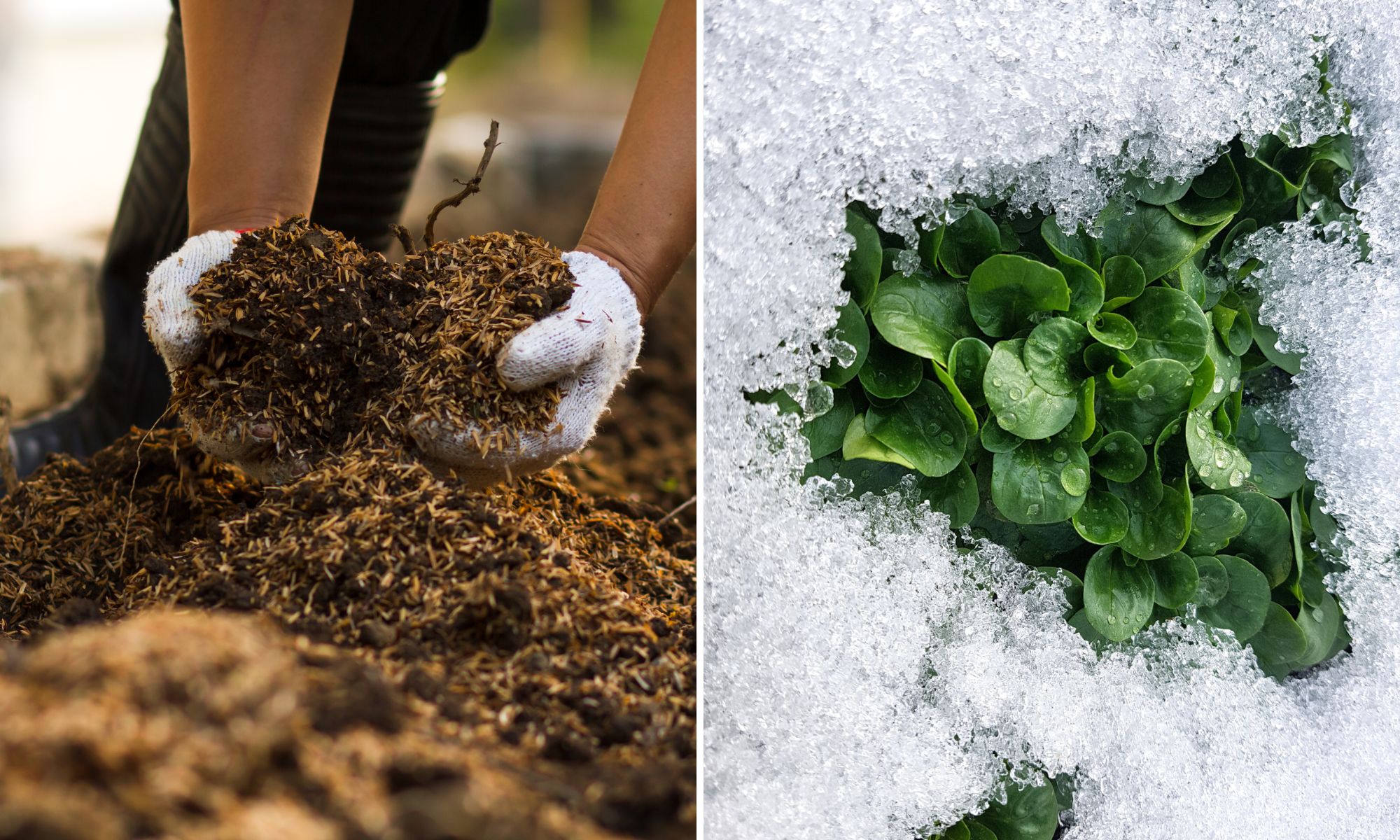Winterize Herb and Vegetable Gardens
Be rewarded with spring and summer growth
Published on November 1st, 2022

Before frost flings its crystal cloak over your gardens, prepare your soil and perennial plants for a long winter slumber. You will be rewarded with herb, fruit and vegetable patches that burst back to life in the spring.
Promote healthy growth
Start by removing any leaves that are affected by fungus or mildew. White, powdery mildew often develops on the leaves of squash plants causing them to die prematurely. Remove any affected leaves and put them in a garbage bag, rather than in your compost. This reduces the amount of fungus and mildew spores that linger in the soil over the winter, ready to spread rapidly once the warm weather returns.
Weed
Water your garden, if needed, to soften the soil then use a rake and trowel to dig deep and remove weeds, including their roots. Some soil experts suggest keeping dandelions and chickweed in your garden over the winter to help anchor the soil in case of high winds. A better option may be to sow cover crops (Soil Association 2022).
Cover crops
As you harvest your vegetables from summer to early autumn, fill the bare spots by sowing the seeds of cover crops (e.g., alfalfa, clover, peas, lentils). These hardy plants will typically grow into October and should remain in the garden over the winter. During the colder months, they slowly begin to breakdown into the soil. This is called green manure and it offers many benefits: the roots of the cover crop keep the soil anchored in high winds, and once these crops are turned under, they release nitrogen and other beneficial compounds into the soil.
In fact, legumes such as French runner beans, sweet peas, lentils, and chickpeas are great additions to the garden at any time of the year. Their deep roots aerate the soil and draw up nutrients that are beyond the reach of most common garden plants. Legumes also capture nitrogen from the air with the help of a soil bacteria called rhizobia. The plant uses some of the nitrogen for its own growth, but a significant amount remains at the roots and is released into the soil once the plant is turned under for compost.
Insulate perennials
Rhubarb, strawberry, chives, thyme, garlic, asparagus, and raspberry and blueberry bushes are popular perennials that overwinter in the garden. Unfortunately, the tender roots and branches of these plants are susceptible to cold snaps, heavy snow and dry winter winds.
To protect your perennials, spread a 5−10 cm layer of mulch on top of the soil. Good options for mulch include leaves, wood chips, sawdust, straw and/or compost. In the spring, remove any mulch that has not broken down over the winter; this allows the sun to warm the soil and promote growth.
Shelter pollinators
Although honeybees imported long ago from Europe are all the buzz, there are nearly 4,000 varieties of native bees in North America that are vital for pollinating our food crops. According to the US Department of Agriculture, bees of all sorts pollinate approximately 75 percent of the fruits, nuts and vegetables grown in the United States, and one out of every four bites of food people take is courtesy of bee pollination (USGS 2015).
Bumblebees are the rotund, furry insects that visit our flowers in the warm months, but have you ever wondered where they go in the winter? They are much closer than you might imagine! They build simple, waxy hives in the soil and under rocks, logs, or piles of leaves. In fact, most species of native bees make their hives in a similar way.
To ensure a healthy crop of fruit and vegetables next year, protect your pollinators during the winter. Leave some sections of your gardens wild and undisturbed. You may also consider building a nest for ground-dwelling bees. To do this, you can drill holes into a chunk of wood, or search online for more elaborate options. The most important thing is to ensure the cavities for the hives are sheltered from wind and precipitation.
Blanket your gardens
Lastly, cover your entire garden with leaves and compost. This will help to maintain moisture in the soil, which is necessary for the survival of beneficial microbes, worms and other garden helpers. By spring, the leaves and compost have usually released their nutrients providing the foundation for the bumper crops of summer.
Sources:
U.S. Geological Survey (USGS). “Bevy of Bees.” June 2015. https://www.usgs.gov/news/featured-story/buzz-native-bees.
Soil Association. “5 Ways To Protect Soil In The Winter.” Accessed October 2022. https://www.soilassociation.org/causes-campaigns/save-our-soil/5-ways-to-protect-soil-in-the-winter/#:~:text=Cover%20vacant%20beds,soil%20retains%20its%20good%20structure
Powered by Froala Editor